
Flower Photos: The Beautiful Rose
A rose is a rose
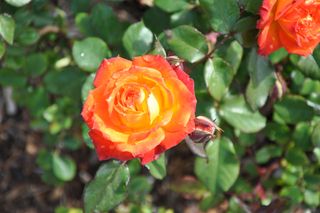
The rose is the most deeply ingrained flower in human history and human culture. It has been immortalized and integrated into music, festivals, poetry and even wars. It has been used as a symbol of passion as well as grief. It is the sign of human love, given on such occasions as the annual remembrance of Mother's Day. Roses are naturally found throughout the Northern Hemisphere, and fossil records show the presence of ancient roses in the Tertiary Period, which began some 70 million years ago.
Many choices
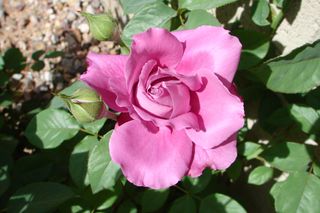
Where the genus Rosa first originated is unknown. In nature, some 150 wild species of Rosa are spread from Alaska to Mexico, from Northern Africa to China. All roses are close relatives of cherries, apples, pears, raspberries and plums and have long been cultivated and cherished for their hips, the fruit of the rose flower that has nutritional and medicinal value. A unique characteristic of the rose is its ability to flower over and over again from early summer to late autumn.
Perfection in a flower

In many ways the rose is the perfect flower: Each flower possesses multiple ovaries that are located in a cup-like structure called a hypanthium. Leaves are located alternately on an often-thorny stem and have a serrated margin. Five petals are typically found on the natural rose while modern hybrid roses posses many more of the colorful petals. Both male and female reproductive parts are found in each flower.
Born from a myth
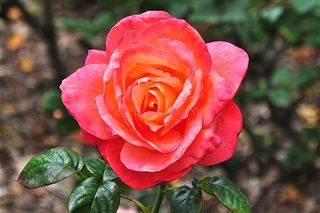
Greek mythology states that it was Chloris, goddess of the flowers, who created the rose. She enlisted the help of Aphrodite, the goddess of love, to give the rose both its name and its beauty. Likewise, Dionysus, the god of wine, helped Chloris by giving the rose it sweet scent. Finally, Apollo, the sun god, flooded the flower with sunlight to make the first rose bloom.
A choice of royalty
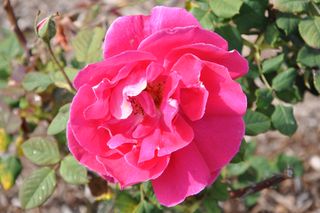
Roses were probably first cultivated by man in the royal gardens of ancient China some 5,000 years ago. In Ur, an ancient city of Mesopotamia (the area of modern day Iraq), 3,000-year-old Sumerian clay tablets contains the first known written reference about roses growing in gardens of the city. Ancient records confirm too that both Confucius (551-479 B.C.) and Cleopatra (69-30 B.C.) were admirers of the beauty and sweet scent of the rose.
Roman luxury
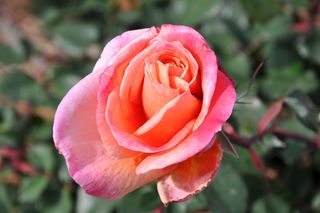
The Romans at first believed that the rose was useful as a source of natural medicines. Soon, the beautiful flowers became necessities at Roman festivals. Roman emperors demanded that their baths be filled with rose water and they reclined on carpets of rose petals during their feasts. Perfumes made from roses became a high priority luxury for the ruling elite and resulted in hardships among the peasant class, who were forced to grow roses instead of cultivating much needed food.
War of the Roses
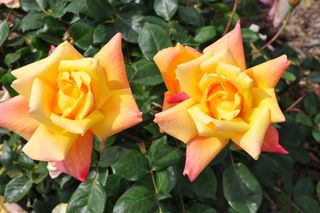
During the 15th century in merry ol' England, the rose became the symbol of conflict between two families, both of whom had laid claim to the English crown. The War of the Roses lasted for 30 years and pitted the House of York, whose symbol was the white rose, against the House of Lancaster, whose symbol was the red rose. In 1486, King Henry VII of the House of Lancaster and the first Tudor king married Elizabeth of York, uniting the families and finally bringing the English civil war to an end.
Sign up for the Live Science daily newsletter now
Get the world’s most fascinating discoveries delivered straight to your inbox.
Beautiful money
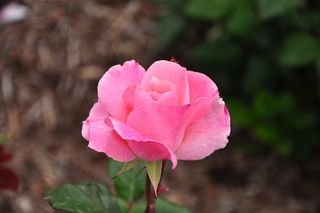
In the 17th century, the rose became so precious across Europe that it — along with rose water — was often used as currency. Roses were used to barter in market places across Europe, and commoners could pay their taxes to the kings using roses and rose water. Josephine, wife of the Emperor Napoleon Bonaparte, created a great rose garden on the edge of Paris that contained over 200 varieties of the cherished rose. All the roses of Europe at this time were shades of pink or white, as the red rose did not arrive from China until the early 19th century.
Leisure time
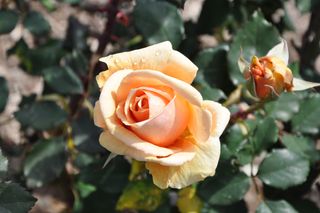
After World War II, many people around the world were able to garden for leisure rather than for food. Gardens full of many beautiful hybrid varieties of rose became a common sight. Various varieties of climbing roses, bush roses and patio roses decorated homes and gardens across the globe. William Shakespeare surely immortalized the rose for the world in 1597 in his play, "Romeo and Juliet," when Juliet so passionately said, "What's in a name? That which we call a rose; by any other name would smell as sweet."
A sign of love
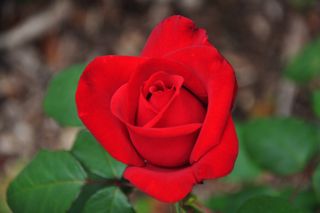
In 1986, the rose was declared the national flower of the United States of America. It is also the national flower of Bulgaria, Cyprus, the Czech Republic, Ecuador, Iran, Iraq, Luxembourg, the Maldives, Romania, Slovakia and England. Today, over 30,000 varieties of rose are available to grow and to give to those who we wish to express a symbol of our love – so Happy Mother's Day to all the mothers of the world. We hope your day is as lovely as the rose.












